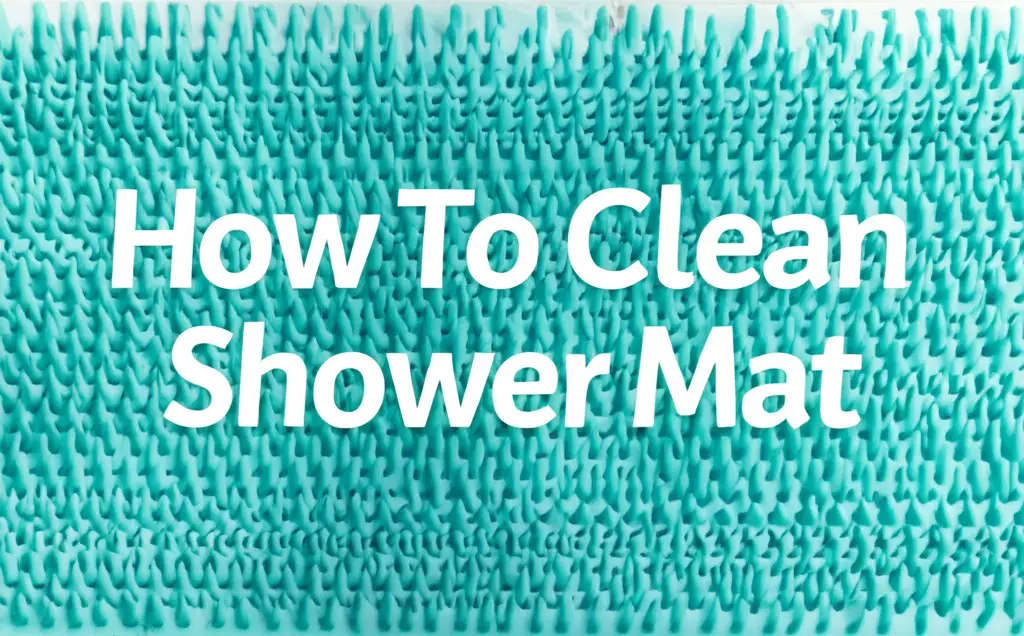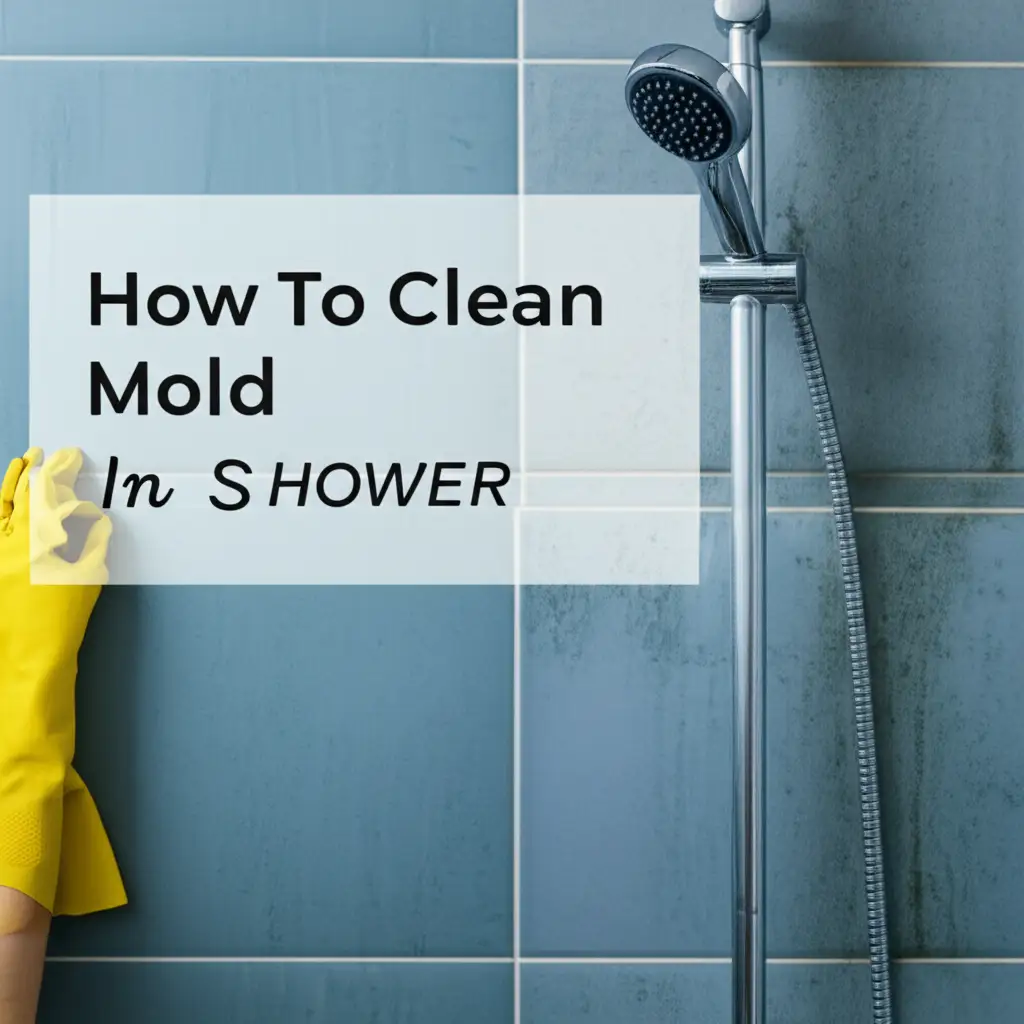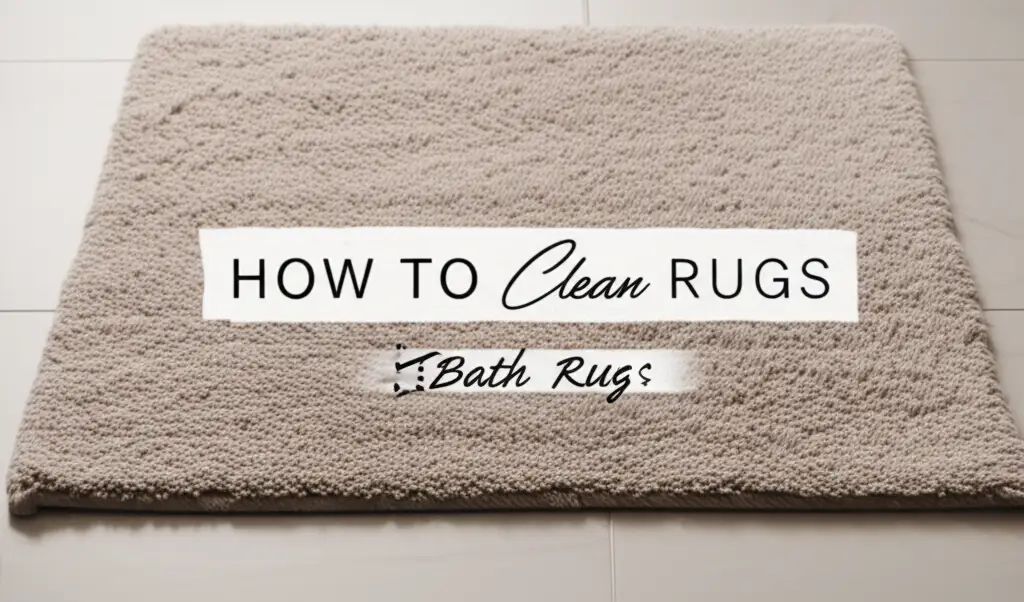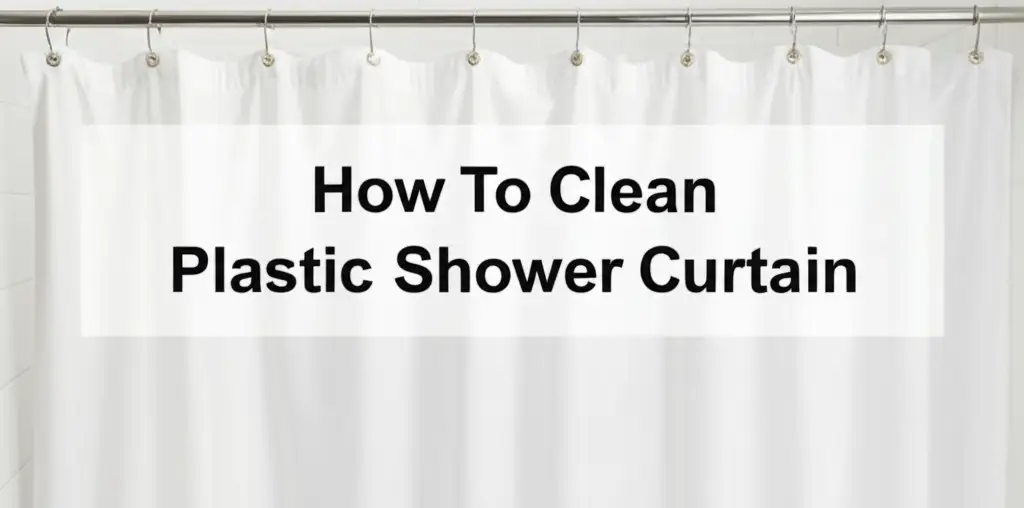· Home Cleaning · 18 min read
How To Clean Shower Mat

How to Clean Your Shower Mat: A Complete Guide for a Hygienic Bathroom
Your shower mat catches a lot. Soap scum, dead skin cells, and constant moisture make it a breeding ground for germs. It often develops ugly grime and unpleasant smells. A dirty shower mat makes your whole bathroom feel unclean.
Cleaning your shower mat regularly is important for a fresh home. It helps keep your bathroom healthy and looking good. This article will show you easy ways to clean shower mats of all types. You will learn about different cleaning methods and simple steps to keep your mat spotless. We will also cover how to fight mold and keep your mat cleaner for longer. Get ready to make your shower mat sparkle again.
Takeaway
- Regularly clean your shower mat to prevent mold and grime.
- Understand your mat’s material to choose the right cleaning method.
- Use simple household items like vinegar, baking soda, or bleach for effective cleaning.
- Proper drying is crucial to prevent mold growth after cleaning.
- Implement daily habits to keep your mat fresh between deep cleans.
How do you clean a shower mat?
You clean a shower mat by first rinsing it to remove loose debris. Then, scrub it with a brush using a cleaning solution tailored to its material, like dish soap for rubber, or machine washing for fabric. Always dry it completely after cleaning to prevent mold.
Why Cleaning Your Shower Mat Matters
A shower mat sits in a wet place. This makes it perfect for mold and mildew to grow. These growths are not only ugly, but they can also cause bad smells. They might also make your bathroom less healthy. Regular cleaning stops these problems.
Your shower mat is important for safety. It stops you from slipping when the shower floor is wet. But a dirty mat can lose its grip. Slime and grime make it slippery, which increases fall risk. Keeping it clean ensures it works as it should.
A clean shower mat improves your bathroom’s look. It makes the space feel fresh and inviting. No one wants to step onto a slimy, stained mat. Cleaning it is a simple step to maintain a pleasant home. It shows you care about your living space.
Ignoring your mat’s cleanliness can lead to bigger problems. Mold can spread from the mat to your shower walls or floor. This makes cleaning your entire shower much harder. Regular mat cleaning saves you time and effort later on. It keeps your whole shower area cleaner.
Identifying Your Shower Mat Type
Different shower mats need different cleaning methods. Knowing your mat’s material helps you clean it safely and well. Most shower mats are rubber, plastic, fabric, or stone. Each material reacts differently to water and cleaners.
Rubber and plastic mats are common. They have suction cups on the bottom to stick to the shower floor. These mats often trap water underneath. This design makes them very prone to mold and mildew. They are durable but need regular scrubbing.
Fabric shower mats are usually made of cotton, microfiber, or bamboo. They sit outside the shower or just inside. These mats absorb water. They dry slower than rubber mats. This can also lead to mildew if not dried correctly. Fabric mats often go into a washing machine.
Stone bath mats are a newer option. They are made from diatomaceous earth. This material absorbs water quickly. It dries fast, which helps prevent mold. Stone mats do not use suction cups. They need very gentle cleaning, often just a rinse or light sanding.
Checking your mat’s care label is a good first step. Labels tell you specific washing instructions. If there is no label, you can usually tell the material by touching it. Rubber mats feel firm and flexible. Fabric mats feel soft. Stone mats feel hard and chalky. Knowing your mat type ensures you use the right cleaning method. This prevents damage and makes cleaning effective.
Essential Supplies for Cleaning Shower Mats
You do not need many special tools to clean a shower mat. Most items are common household products. Having the right supplies ready makes cleaning easier and quicker. Gather everything before you start.
First, you will need a stiff-bristled brush. This helps scrub away grime and mold. An old toothbrush can also work for small spots or tight areas. Do not use metal brushes, as they can damage some mat materials. A plastic or nylon brush is ideal.
For cleaning solutions, white vinegar is a powerful natural option. It kills mold and mildew. Baking soda is another great natural cleaner. It helps remove odors and light stains. Dish soap is also useful for breaking down greasy residue. These items are often already in your kitchen.
Sometimes, for tough mold, you might need a stronger cleaner. Bleach is very effective against mold and mildew. Use it carefully and always in a well-ventilated area. Mix it with water as directed. Hydrogen peroxide is a milder alternative to bleach. It also kills germs and brightens surfaces.
You will also need a bucket or basin for soaking. This is useful for deep cleaning some mat types. Rubber gloves are important to protect your hands from cleaners and grime. Finally, a clean cloth or towel for drying is essential. Proper drying prevents new mold growth. Having these simple tools ready ensures a smooth and effective cleaning process.
How to Clean Rubber and Plastic Shower Mats
Rubber and plastic shower mats are very common. They are durable, but they collect a lot of grime. Cleaning them regularly keeps them safe and fresh. You can clean these mats by hand or sometimes in a washing machine.
Start by rinsing the mat in the shower or tub. Use warm water to remove loose hair and soap scum. Pay attention to the suction cups on the bottom. Dirt often gets trapped under them. This initial rinse helps loosen surface dirt.
For hand cleaning, lay the mat flat in the tub or on a clean floor. Sprinkle baking soda generously over the dirty areas. Let it sit for about 10-15 minutes. This helps absorb odors and loosen grime. Then, pour white vinegar over the baking soda. It will fizz, which is a good sign it is working. The combination attacks mold and stains. Many people prefer natural cleaners like vinegar because they are effective and safe. Learn more about how to clean your shower with vinegar.
Use a stiff brush to scrub the mat. Work in small sections, applying gentle pressure. Make sure to scrub both sides, especially around the suction cups. These are often the dirtiest parts. Rinse the mat thoroughly with clean water. Check for any remaining grime. Repeat the scrubbing if needed.
For tougher stains or mold, a bleach solution can be used. Mix 1/2 cup of bleach with 1 gallon of water in a bucket. Submerge the mat for 30 minutes. Always do this in a well-ventilated area. After soaking, scrub the mat and rinse it completely. Bleach is very strong, so use it with care. You can find more tips on how to clean your shower with bleach.
Some rubber or plastic mats are machine washable. Check the care label first. If safe, put the mat in the washing machine with a few old towels. The towels help balance the load and provide scrubbing action. Use a gentle cycle with cold water and a small amount of mild detergent. Avoid hot water, as it can damage the rubber. After washing, never put rubber mats in a dryer. High heat will warp or melt them. Hang them to air dry completely.
After cleaning, drying is the most important step. Hang the mat over the shower rod or a clothesline. Ensure air can circulate around both sides. Allow it to dry completely before putting it back on the shower floor. This prevents new mold from growing. Proper drying extends the mat’s clean life significantly.
Washing Fabric Shower Mats
Fabric shower mats add comfort and style to your bathroom. They are often made from cotton, microfiber, or bamboo. These mats are generally easy to clean because most are machine washable. Proper washing keeps them soft, absorbent, and free from mildew.
First, shake the mat outdoors to remove loose dirt and hair. This prevents debris from clogging your washing machine. Inspect the mat for any visible stains or mildew spots. Pre-treating these areas makes washing more effective. For stains, apply a spot cleaner or a paste of baking soda and a little water. Let it sit for 15-30 minutes before washing.
If you see mildew, a vinegar pre-soak is excellent. Mix equal parts white vinegar and water in a basin. Submerge the mildewed mat for an hour. Vinegar naturally breaks down mold and freshens fabrics. After soaking, drain the mat and prepare for machine washing.
Always check the care label on your fabric mat. Most labels recommend a gentle cycle with cold or warm water. Avoid hot water, especially for mats with rubber backings, as heat can damage them. Use a mild laundry detergent. Do not use too much soap; it can leave residue on the mat.
You can wash fabric shower mats with towels. The towels help scrub the mat during the wash cycle. They also balance the load, which protects your washing machine. Wash on a gentle or delicate cycle to protect the mat’s fibers and any non-slip backing.
When the wash cycle finishes, remove the mat promptly. Fabric mats absorb a lot of water. Leaving them wet in the machine can encourage mildew growth. For drying, check the care label again. Many fabric mats are dryer safe on a low heat or air fluff setting. High heat can shrink cotton or damage rubber backings. If your mat has a rubber backing, air drying is often the safest option.
Hang the mat over a clothesline or a drying rack. Ensure good air circulation around all sides. It is crucial for the mat to dry completely before returning it to the bathroom floor. A damp mat will quickly grow mildew again. Proper drying ensures your fabric shower mat stays fresh and soft for longer.
Caring for Stone Shower Mats
Stone shower mats are a modern choice. They are usually made from diatomaceous earth. This material is highly absorbent and dries very quickly. This quick-drying property naturally resists mold and mildew. However, stone mats require a different cleaning approach than rubber or fabric mats.
Stone mats do not use suction cups. They sit flat on the floor. Their porous nature makes them good at absorbing water, but also prone to absorbing oils and dirt. Regular care is simple. After each use, you can simply prop the mat up to allow air circulation. This helps it dry even faster and prevents any moisture from lingering underneath.
For daily cleaning, often a simple rinse is enough. You can hold the mat under the showerhead to wash away surface dust or light footprints. Let it air dry afterward. Avoid using harsh chemical cleaners on stone mats. These chemicals can clog the pores of the diatomaceous earth. Clogged pores reduce the mat’s absorbency and drying power.
If your stone mat starts to feel less absorbent or shows light stains, a gentle scrub is needed. Use a soft brush or a sponge. You can use a small amount of mild dish soap and water. Scrub the stained area gently. Rinse the mat thoroughly with clean water to remove all soap residue.
For more stubborn stains or if the mat feels less effective, light sanding can restore it. Many stone mats come with a piece of sandpaper for this purpose. Gently rub the affected area with the fine-grit sandpaper. This removes the top layer of absorbed oils and dirt. Sanding restores the mat’s natural absorbency. After sanding, rinse the mat to remove any dust.
Never put a stone mat in a washing machine or dryer. The material will break apart. Do not submerge it in water for long periods, as it can weaken the material. Avoid stepping on it with excessively dirty feet or shoes, as this pushes grime deep into the pores. Proper care ensures your stone shower mat remains highly effective and hygienic.
Tackling Mold and Mildew on Shower Mats
Mold and mildew are common problems for shower mats. The constant moisture in a bathroom creates ideal conditions for them to grow. Spotting mold early helps prevent it from spreading. It is important to clean it as soon as you see it.
For light mold or mildew, white vinegar is often effective. Vinegar is a natural disinfectant and mold killer. Fill a spray bottle with undiluted white vinegar. Spray it generously onto the affected areas of the mat. Let the vinegar sit for at least an hour. This gives it time to work. After an hour, scrub the mat with a stiff brush. Rinse it thoroughly with clean water. The smell of vinegar dissipates as it dries. This method is safe for most mat types, including rubber, plastic, and fabric.
Baking soda also helps. Sprinkle baking soda over the moldy spots. Then spray vinegar on top. The fizzing action helps lift the mold. Scrub the area and rinse well. This combination is great for both cleaning and deodorizing. It is a powerful duo.
For tough, persistent mold, a bleach solution may be necessary. Mix 1/2 cup of bleach with 1 gallon of water. Submerge the mat in this solution for about 30 minutes. Always work in a well-ventilated area. Wear rubber gloves to protect your hands. After soaking, scrub the mat with a brush and rinse it completely. Ensure all bleach residue is gone. Bleach can be harsh on some materials, so use it sparingly and only when other methods fail. You can find more information on how to clean mold in your shower.
Hydrogen peroxide is a milder alternative to bleach. It is also effective at killing mold. Apply a 3% hydrogen peroxide solution directly to the moldy areas. Let it sit for 10-15 minutes. Then scrub and rinse. Hydrogen peroxide is safer for colored mats than bleach. It also breaks down into water and oxygen, leaving no harmful residue.
After cleaning any mold, drying the mat completely is crucial. Mold needs moisture to grow. If the mat remains damp, the mold will quickly return. Hang the mat in a sunny spot if possible. Sunlight helps kill remaining spores. Ensure good air circulation around the mat until it is bone dry. Regular cleaning prevents mold from getting a foothold.
Preventing Future Buildup on Shower Mats
Keeping your shower mat clean is easier with preventative steps. Small daily habits can make a big difference. These actions reduce moisture and grime buildup. They extend the time between deep cleans.
First, always hang your shower mat to dry after each use. Do not leave it flat on the shower floor. Water gets trapped underneath, creating a perfect environment for mold. Hanging it over the shower rod allows air to circulate around all sides. This helps the mat dry quickly and thoroughly. I make sure to do this every time I finish showering.
Rinse the mat quickly after each shower. A quick spray of clean water removes soap scum and loose hair. This stops them from building up and becoming stuck. This simple rinse takes only a few seconds. It keeps the mat fresher daily.
Consider using a squeegee on your shower walls and floor after each shower. Less water on these surfaces means less moisture to wick onto your mat. This also helps keep your entire shower cleaner. You can learn more about how to clean the bottom of your shower for overall hygiene.
Ventilate your bathroom well. Turn on the exhaust fan during and after showers. Open a window if you have one. Good air circulation dries out the bathroom faster. This reduces overall humidity, which mold loves. A dry bathroom is a clean bathroom.
Regularly spray your mat with a mild anti-mold solution. A diluted vinegar solution (equal parts vinegar and water) works well. Spray it on the mat after it has dried. This creates an environment less welcoming to mold spores. Do this a few times a week.
Rotate multiple shower mats. If you have two mats, you can swap them out. This allows one mat to completely dry for a longer period. It also distributes wear and tear. This simple rotation extends the life of your mats. Implementing these prevention tips will keep your shower mat cleaner for longer.
When to Replace Your Shower Mat
Even with the best cleaning, shower mats do not last forever. Knowing when to replace your mat is important for hygiene and safety. An old mat might not clean well or might become unsafe.
Look for signs of permanent discoloration. If your mat has dark stains that do not go away with cleaning, it is likely mold or mildew deeply embedded in the material. This type of growth can be hard to remove completely. It also means the mat might be holding onto unpleasant smells.
Check the mat’s texture and integrity. Rubber and plastic mats can become brittle or crack over time. If the suction cups are no longer holding firmly, the mat can slip. This creates a serious fall hazard. Fabric mats can fray, thin out, or lose their absorbency. Stone mats might develop deep cracks or lose their quick-drying ability.
Smell is another indicator. If your mat constantly smells musty, even after cleaning, it is a sign of deep-seated mold or bacterial growth. A persistent bad odor indicates it is time for a new mat. You want your bathroom to smell fresh.
The general lifespan of a rubber or plastic shower mat is 1-2 years with regular use and cleaning. Fabric mats might last 2-3 years, depending on the material and how often they are washed. Stone mats can last several years if cared for properly. However, these are just guidelines. Your mat might need replacing sooner if it sees heavy use or poor ventilation.
Consider safety above all else. If your mat no longer provides a secure non-slip surface, replace it immediately. A functional shower mat is a safety device. Do not risk slips and falls on an old, worn-out mat. Replacing your mat when needed ensures your bathroom remains a safe and clean space.
FAQ Section
How often should I clean my shower mat?
You should clean your shower mat at least once a week. If you use your shower daily or if multiple people use it, clean the mat more often. A quick rinse and hanging it to dry after each use helps a lot between deep cleans.
Can I put my shower mat in the washing machine?
It depends on the mat’s material. Fabric shower mats are usually machine washable. Rubber or plastic mats may be machine washable on a gentle cycle with cold water, but check the care label first. Never put rubber mats in the dryer; air dry them instead.
What is the best way to remove mold from a shower mat?
For mold, white vinegar is a good first step. Spray undiluted vinegar, let it sit for an hour, then scrub and rinse. For stubborn mold, a diluted bleach solution (1/2 cup bleach per gallon of water) can be used, soaking for 30 minutes, followed by scrubbing and thorough rinsing.
Is white vinegar safe for all shower mat types?
White vinegar is generally safe for most shower mat materials, including rubber, plastic, and fabric. It is a natural disinfectant and mold killer. Always rinse the mat thoroughly after using vinegar to remove any residue. Do not use vinegar on stone mats, as it can clog their pores.
How do I prevent my shower mat from getting moldy?
Prevent mold by hanging your mat to dry completely after every use. Ensure good bathroom ventilation by using an exhaust fan. You can also spray the mat with a diluted vinegar solution a few times a week. These steps greatly reduce moisture, preventing mold growth.
Can I use baking soda to clean my shower mat?
Yes, baking soda is very effective. Sprinkle it over the wet mat, let it sit for a few minutes, then scrub. You can also combine it with white vinegar for a fizzing action that lifts grime and deodorizes. Always rinse the mat thoroughly afterward.
Conclusion
Keeping your shower mat clean is a simple yet vital task. It maintains a healthy, safe, and pleasant bathroom environment. You have learned how to clean shower mats of different materials, from rubber to fabric and even stone. Each mat type has specific needs, and following the right steps ensures long-lasting cleanliness.
Remember to identify your mat’s material first. This helps you choose the safest and most effective cleaning method. Regular cleaning, along with good habits like proper drying, will prevent mold and grime buildup. By dedicating a little time to your shower mat, you ensure it continues to be a safe and clean accessory. Make cleaning your shower mat a regular part of your bathroom cleaning routine. You will enjoy a fresher shower experience every day.
- Shower Mat Cleaning
- Bathroom Hygiene
- Mold Removal
- Mat Care




